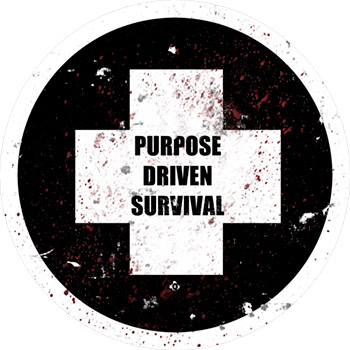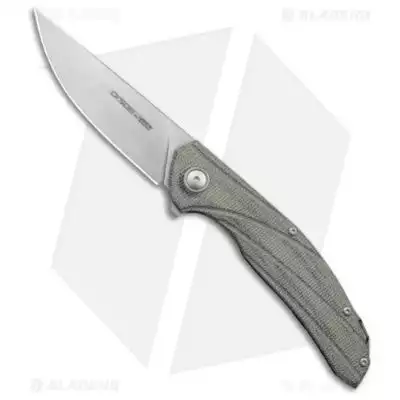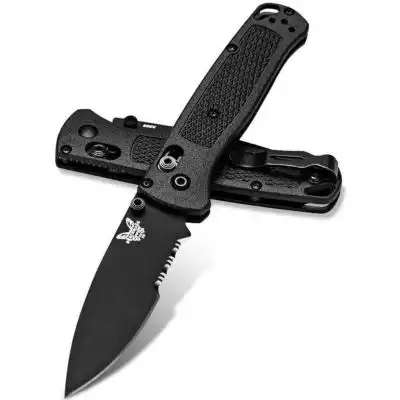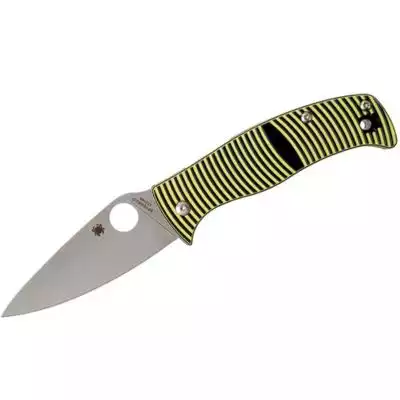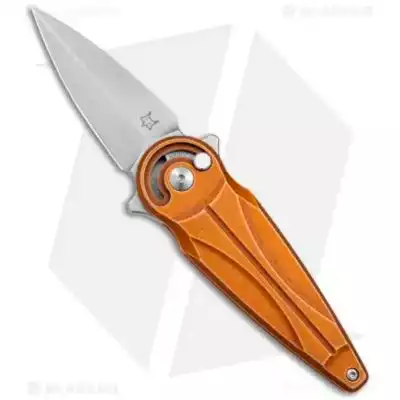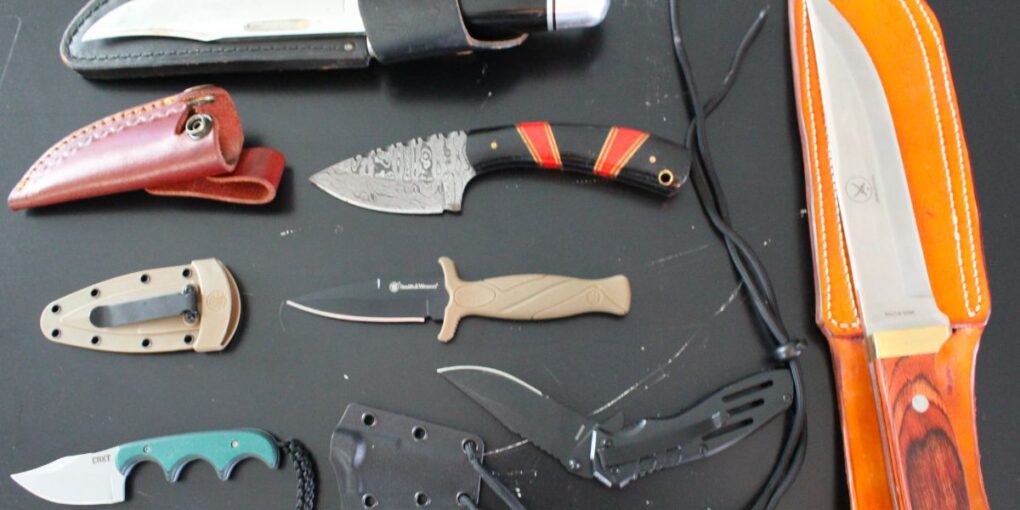
Pocket knives come in a wide variety of sizes and shapes, from single Wharncliffe blades all the method to old-fashioned Congress configurations. Picking the best light-weight EDC (daily bring) swiss army knife mostly depends on your intent, purpose, and personal preference.
Whether you’re using your swiss army knife to open a letter or plan, cut a fishing line or rope, or start a fire, there are actually thousands to pick from.
To narrow your options, I’ve restricted the selection to the most helpful blade shapes and knife patterns for daily energy usage and SHTF functions:
- Drop point
- Straight back
- Sheepsfoot
- Dagger
- Whittler
I have actually thought about these 3 essential criteria:
- Quality of the materials
- Resilience
- Convenience
While there are dozens more to select from, these five will serve most of everyday carry needs.
Our Leading Choose
Viper Knives Anso Orso 2 V5998CG
The straight-back blade and high-quality materials make the Anso Orso the most durable and versatile light-weight EDC penknife.
Finest for Versatility Case XX 16747 Seahorse G10 The old-fashioned whittler design integrates the Wharncliffe blade, a standard pen knife, plus a coping blade to satisfy all your EDC jobs, whittling, and scribing requirements.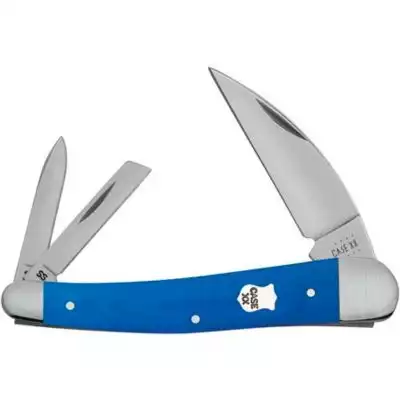
Best Lightweight EDC Penknife Reviews
Best All Around EDC Penknife: Viper Anso Orso 2
Length: 8.25 ″|Manage: 4.75 ″|Blade: 3.4 ″|Innovative: 3.4 ″|Weight: 4 oz Typically discovered on repaired blades, this puukko-style, straight-back blade makes the Viper Anso Orso the perfect workhorse for an EDC. From woodwork to food preparation
, the Viper is a well-rounded beneficial tool for sturdy cutting
, piercing, skinning, and even bushcraft work. Examine Prices on Blade HQ The Viper Anso Orso 2 is made with unequalled quality beginning with the German-made LO-QPM 20-4 solidified stainless-steel blade, offering it remarkable edge retention and corrosion resistance
. Its strength is rated around HRC60, so it can endure cracking, breaking, and sudden effect damage when you drop it. The Viper blade is recessed into the manage just enough that you do not unintentionally get it when reaching for it. The blade includes a full, flat grind for a thicker, stronger blade with included toughness.
It has an easily contoured, top-notch Micarta handle with a titanium backspacer that guarantees your blade stays straight and has the needed area when opening and closing.
The handle is stylish, strong, and engraved, providing it a hand-crafted organic feel. It likewise has a rock-solid titanium frame lock keeping your fingers safe and providing a wear-resistant interface between the frame and blade.
It features a tip-up, right-handed bring titanium pocket clip that keeps the blade spinal column guarded by your outdoors pocket seam. The clip is extremely noticable off the body of the deal with so it does not snag on your belt or pocket.
The back of the blade has a short, stubby flipper-style opener with a prolonged tang. The pivot features caged ball bearings that produce a smooth and easy walk and talk.
The craftsmanship and quality of the Viper are really excellent and make this the perfect EDC penknife that’s comfortable and light-weight. This knife is essentially maintenance-free whether you’re utilizing it in the workplace, on the farm, or in the bush. Although a little on the bigger side, you just can’t beat the quality and resilience.
Pros:
- Superior quality
- Flexible
- LO-QPM 20-4 hardened steel
- Ergonomically natural feel
- Fantastic edge retention
- Rust resistance
- Repaired blade feel
Cons:
- Right-handed only
- Short, stubby flipper
- Too large for some
Best Whittler Pocket Knife: Case Seahorse Whittler Swiss Army Knife
Length: 6.375 ″|Deal with: 4 ″|Blade: 2.375 ″|Leading edge: 2 ″|Weight: 2.6 oz If you’re looking for an everyday carry like Grandfather used to have, then look no further than Case’s Seahorse Whittler. It makes an exceptional general-purpose utility knife. Its long, piercing pointer resembles a tanto-style guillotine,
and its straight edge works for carving and whittling jobs. Check Costs on Knife Nation USA This old-fashioned swiss army knife features a primary Wharncliffe blade with a thick back for additional bite and sturdiness. The Wharncliffe is one of the very best blades for optimum cutting efficiency. It’s curved to a great point with a straight-honed edge that works for daily tasks, outdoor camping, or carpentry work.
Its secondary blades include a traditional pen blade and a coping blade. Initially designed to sharpen quilled ink pens back in the day, the pen blade is great for daily tasks like opening envelopes or boxes, cutting light-weight rope, or food prep.
A favored tool amongst carpenters and electricians, the coping blade is perfect for making cuts in tight locations, marking cut lines, or stripping wires.
All three blades are made with high-carbon Tru-Sharp stainless-steel, a 420HC high in chromium, enhancing tensile strength for edge retention. Because its HRC is just in the neighborhood of 54– 57, many wielders consider Tru-Sharp low-grade steel that’s too soft for their preference.
Nevertheless, just as lots of prefer the Tru-Sharp for its simple sharpening and worry-free upkeep. Its hollow grind is thin enough that what it does not have in hardness, it offsets in edge. Plus, its blade geometry helps it hold an edge longer.
Out of package, the edge is rough and vulnerable to having burrs. You’ll require to invest some time grinding it down and sharpening it back. However, once you get it where you desire it, it’s simple to preserve and well worth the effort.
The G10 handle can be found in a range of colors and styles, is lightweight, and incredibly strong with a comfy grip. It’s ergonomically comfortable, accommodating a full grip without any hot spots. The Seahorse has great spring tension with a nick nail opener but has a no-lock slip joint system that can close on your fingers if you’re not mindful.
However, the walk and talk functions smooth deployments with clean snaps. All three blades insinuate and out with excellent clearance and no rubbing.
If you’re searching for the standard whittling penknife, the Seahorse bites and cuts well and is perfect for notching and sculpting. This is the ideal knife for traps and snares, developing plume sticks, or making a bow drill kit.
Overall it’s a well-finished knife, and the panels taper nicely to the brass. There are no spaces along the spine, and there is little to no wobble in the blade. Since it’s a standard pocket knife, it doesn’t feature a pocket clip, which might be a turn-off to some.
Pros:
- Well-crafted design
- Outstanding edge
- Complex usage
- Comfy and durable manage
- Ambidextrous
- Fits well in the pocket
Cons:
- No pocket clip
- Blade requires retouch out of package
- Slip joint system
- Budget steel
Best Drop Point: Benchmade Bugout Axis
Length: 7.46 ″|Deal with: 4.22 ″|Blade: 3.24″|Leading edge: 3 ″|Weight: 1.8 oz One of the most popular blade designs for hunters and anglers is the drop-point blade. Its convex spinal column curves from handle to point, giving it a strong suggestion.
Furthermore, its broad belly makes
it the best option for slicing and meat processing. Examine Rates on Amazon If you’re searching for the ideal lightweight hunting and fishing pocket knife, I like the Bugout Axis. Its CPM-S30V stainless steel blade includes an excellent balance between rust resistance, edge retention, and durability. Its HRC averages around 58– 60, which has to do with 4 times greater than the 440C, resulting in remarkable hardness and wear resistance. The thinness of the blade makes it excellent for slicing.
The handle is CF-Elite for an incredibly lightweight, appealing, and strong four-finger grip. It has a slim and comfortable profile making it ideal for those with smaller hands. In addition, there’s an extra-large lanyard hole for tethering.
The Bugout Axis’s reversible, tip-up, deep-carry pocket clip makes it ambidextrous. Nevertheless, the deal with is a little on the slick side, and with prolonged use, the clip digs into the palm.
The walk and talk is excellent, with Black titanium thumb studs on both sides of the blade and high-quality bronze washers. It also features the initial Benchmade Axis lock that presses into the backstop, keeping the knife open and safeguarding your fingers.
Pros:
- Superior blade steel
- Super light
- Exceptional solidity and toughness
- Fantastic edge retention
- Corrosion resistance
- Ambidextrous
Cons:
- Slick handle
- Clip produces hot spot
Best Sheepsfoot Blade: Spyderco Caribbean Sheepsfoot Folding Knife
Length: 8.54 ″|Manage: 4.48 ″|Blade: 3.7 “| Innovative: 3.67 ″|Weight: 4.2 oz For those who choose blunt-tip knives, the Spyderco Caribbean sheepsfoot is an excellent alternative. This is the best light-weight EDC swiss army knife for emergency responders and mariners. Check Prices on Amazon
The blunt tip of the Spyderco Caribbean makes it the ideal tool for cutting safety belt or clothing from those in distress and would make a great addition to any medical package or bug-out bag.
The blade is crafted with LC200N ultra stainless steel, which is high in nitrogen. This superior-quality blade is 100% rust resistant, making it the ideal lightweight EDC for those around water. It has a full-flat grind and is really thin behind the edge.
Regrettably, at 3.7 ″, this blade may be too long for some to lawfully bring.
Its HRC ranges from 58– 60, providing exceptional edge retention and water resistance. The Spyderco Caribbean can do a great deal of cutting without getting dull. When you do sharpen, it’s simple to get a razor-sharp edge with little effort. The Caribbean Sheepfoot has the included option of a plain or serrated SpyderEdge.
The blade features Spyderco’s trademarked thumb-hole opening system and compression lock with a leaf spring that engages in the blade tang cutout, making sure the blade remains open up until you launch it.
Furthermore, the highly desired phosphor bronze washer provides exceptional walk and talk.
The manage is made from top quality, strong, and light-weight G10 building with alternating colored layers to develop a ribbed, nonslip grip. It’s conveniently contoured and big enough to utilize with gloves without blockage, which also makes it ideal for bigger hands. It also features a blade guard on both ends.
There’s a reversible titanium pocket clip that supports ambidextrous carry, along with a lanyard hole for tethering. However, the pocket clip isn’t focused, which creates a bit of friction when pulling it in and out of your pocket.
While the Caribbean is a quality, purpose-driven knife, it is big, which might not be ideal for many individuals. Visually, it leaves a little something to be desired.
Pros:
- 100% deterioration resistant
- Exceptional edge retention
- Easy to sharpen
- Quality building and construction
- Requires little to no maintenance
Cons:
- Too big for some
- Long blade
- On the high-end of light-weight
Finest Dagger Blade: Fox Saturn Folding Knife
Length: 6.61 ″|Handle: 4.05 ″|Blade: 2.56″|Cutting edge: 3 ″|Weight: 3.6 oz Dagger blades are specifically created for piercing with cutting edges on both sides of the blade for quick entry and exit. As such, they’re usually found on tactical knives. For the ultimate self-defense light-weight EDC pocket knife, the Fox Saturn tops my list. Its balanced dagger style is perfect for both piercing and slicing.
To start, the blade is crafted with remarkable N690 Bohler steel, which is carefully grained, cobalt-enriched stainless-steel. This offers a fine edge with improved retention remarkable to most other stainless formations. Its HRC averages between 55 and 60, supplying the perfect balance in between hardness and toughness.
The blade features an unique radial-slide opening system with a prolonged tang and button lock to firmly hold the blade open.
The copper-anodized aluminum manage is low-density, providing it a nice feel without too much weight. While the aluminum handle is a quality build, it can scratch and damage rather easily compared to other choices.
It has a good tapered style with a four-finger grip and a single-barrel spacer, offering your blade with a lot of clearance on the walk.
The deal with also features an aluminum, tip-up, right-side belt clip.
Pros:
- Superior N690 Steel
- Quality aluminum handle
- Balanced solidity and strength
- Enhanced edge retention
Cons:
Buyers’ Guide
There are a couple of essential functions that you must try to find in a lightweight EDC swiss army knife, a lot of which are subjective. However, these components require careful factor to consider.
Weight
Most consider anything under 3 ounces to be light-weight. However, I like my blades to load a bit more punch or they feel too lightweight.
Working outdoors all day often needs something a bit more rugged, so I generally choose a larger pocket knife, which just naturally carries more weight. I have actually also discovered superlight blades to be a dissatisfaction. Lightweight is one thing, however a flimsy knife won’t do you much excellent.
My limit for a lightweight blade hovers under five ounces, but this is simply an individual choice.
Blade
Probably the most vital part of the knife, you desire a blade made from fine-quality steel. You want a good blade that combines solidity with strength. If it’s too hard, it’s vulnerable to splitting and cracking, and if it’s too soft, your edge will wear away quickly.
You’ll usually discover knife blades in a variety of fashions, however all are normally made from one of 3 options.
- Stainless steel
- High-carbon steel
- Tool steel
High-carbon blades generally include better solidity, toughness, and edge retention. They’re also easier to sharpen, get a sharper edge, and hold their edge much longer than stainless steel. Conversely, they’re likewise more prone to corrosion.
Toughness and Corrosion Resistance
A blade’s strength is usually determined using the Rockwell Firmness Scale (HRC). A lot of pocket knives fall under these three classifications:
- HRC 56– 58: A premium knife that retains its sharpness for a longer period and is simple to hone
- HRC 58– 60: Standard firmness of a lot of pocket knives; will maintain sharpness longer however more difficult to hone
- HRC 60– 62: Prone to brittleness and challenging to sharpen
Enhanced corrosion resistance usually results in a loss of durability, hardness, and edge retention. Nevertheless, you desire your EDC lightweight swiss army knife to hold up against everyday wear and tear. Pocket knives are generally exposed to dirt, water, and chemicals that trigger rust.
Rust resistance is generally accomplished by adding Chromium, but metallurgists add a range of other ingredients that boost a blade’s functions:
- Carbon: Improves hardness
- Cobalt: Includes strength and increases solidity
- Chromium: Includes rust resistance, use resistance, and increases solidity
Blade Design
Particular blades are developed for purpose-driven tasks. Many times you’ll see poor knife reviews as an outcome of said knives being utilized for tasks other than what they were planned for.
In my viewpoint, these are the most common purpose-driven blade designs and the central focus for this round-up:
- Drop point: Best for opening boxes, slicing, and meat processing
- Straight back: Finest for piercing, skinning, and bushcraft tasks
- Sheepsfoot: Blunt nose to avoid puncturing, finest for medics, emergency situation responders, and mariners
- Dagger: Double-edged blade best for self-defense
- Whittler: A universal utilitarian knife best for woodworking and scribing
In addition to blade style, some jobs call for a straight blade, whereas others need a serrated one.
A straight blade is much easier to sharpen, more versatile, and more useful for a lot of cutting jobs associated with everyday usage. Serrated blades have their purpose when handling thick ropes and branches however aren’t needed for daily usage.
Manage Building
Next to the blade, the deal with is essential to a quality EDC lightweight pocket knife. These are the most common and durable choices for the typical pocket knife:
- Bone
- Wood
- Aluminum
- Carbon fiber
- G10
- Fiberglass strengthened nylon
- Stainless steel
- Titanium
- Micarta
Locking System
Whenever possible, your swiss army knife ought to have some sort of locking system to keep your fingers intact.
There are numerous choices and some are simpler to run than others, so it’s a great idea to ensure you can securely close the knife with whatever mechanism it has in location. Occasionally, you’ll find one that’s so hard to close it’s challenging not to slice your fingers off in the process.
Stroll and Talk
The walk and talk of your pocket knife describes how well the blade opens and closes. The walk describes the feel of the tang as it moves along the knife’s spring. The talk is the sound the knife makes when the blade opens and closes.
A great walk and talk has a strong breeze on the open and a smooth glide across the springs. The blade ought to be perfectly aligned with the deal with and the barrel should offer adequate area to avoid any rubbing versus the liner or other blades.
You should not feel any friction or hangups on the walk, and the opening mechanism ought to offer one fluid motion without any resistance. You shouldn’t hear any additional clicks or clacks on the talk except for the single snap of the blade popping into place behind its locking system.
Other Knife Anatomy
Don’t ignore the nuts and bolts of your knife. They’ll be most vulnerable to wear, tear, and rust, so ensure they’re made from quality materials. These are the ones that typically fail:
- Pivots and washers
- Frame screws
- Barrel spacers
- Pocket clips
- Handle scales
- Liners
Aluminum, high-carbon steel, or titanium are constantly outstanding options. Prevent nylon and Teflon washers.
Conclusion
I love the Viper Anso Orso for its puukko-style bushcraft sturdiness in a light-weight folding blade. It makes the ideal outdoor utility knife for deal with the homestead. However, on those days when I need something a little bit more discreet, Case’s Seahorse Whittler fits perfectly into a small pocket.
